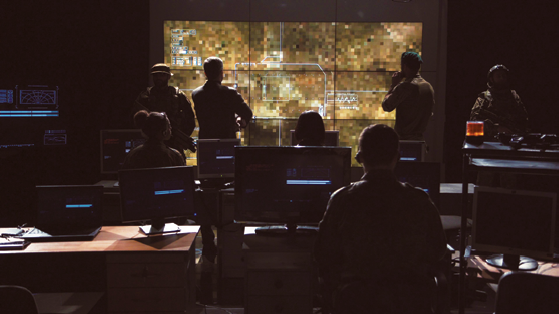Confronted with asymmetric warfare since the end of the cold war, NATO Allies have maintained an edge over potential enemies thanks to their advanced Command and Control (C2) systems. Moreover, dominance in the air and in space has allowed almost unimpeded Intelligence Surveillance and Reconnaissance (ISR) coverage of threat areas.
Today’s C2 systems, and their rich intelligence information sources, have allowed forces to execute missions better and faster than ever before, but potential enemies have similarly made technological advances.

There are now near-peer adversaries with capabilities spread across the air, land, sea, space, and cyber domains that demand a new approach to C2. The ability to prosecute high-tempo joint coalition operations simultaneously across all domains is now seen as essential, but there are many issues to overcome.
The concept of Multi-Domain C2 (MDC2) is emerging as a key enabling capability to counter adversaries that increasingly demonstrate their ability to bring about asymmetric effects.
Many of today’s C2 systems are based upon outdated legacy technology, are rarely interoperable, and certainly incapable of the rapid agile development required to meet emerging challenges. Even the current ISR advantage brings with it a dilemma that must be overcome — how to exploit the vast amount of rich intelligence data from many sources and spread across the network of networks that is typical of the Federated Mission Network (FMN)?
There are many new capabilities coming online that can help and the NATO Allied Ground Surveillance (AGS) system is one such example that will improve ISR data sharing: but the C2 systems it will feed are stove-piped, and service specific, with little dynamic data shared across domains.
If MDC2 goals are to be achieved, then our military forces need the ability to rapidly switch from one course of action to another across all domains and environments — to be able to coordinate operations, and to make informed decisions based upon exceptional Shared Situational Awareness (SSA).
The Common Operating Picture (COP) has been a traditional provider of SSA but it has all too often been limited by the detail that can be shared. Tactical and Operational level Pictures have differed hugely in content and the ability to coordinate across the services, and especially between nations of a coalition, has all too often been the limiting factor.
How can we do better? Industry has not stood still and enabling network capability, even between disadvantaged forces limited by network bandwidth, can now enable that cross-network robust sharing of intelligence data.
This can only work if systems are based upon standards, can allow the military staff officer to view any data in-context and can be used without a burden of specialist training. We risk being swamped by the amount of data now available, whether Open-Source Intelligence (OSINT) or based upon more traditional ISR products.
In 2017, the NGA director, Robert Cardillo, forecast that there may be a million times more data in just five years. He went on to highlight that NGA alone would need eight million analysts.
Even with an increasing use of reach-back capability, to HQs out of theatre, this problem needs another approach, and once again technology can help. Novel techniques to visualize data, to allow a user to exploit what is available, and generally to better understand and exploit what is available are all ready to use.

We cannot create the analysts required but these new techniques, as well as emerging AI capabilities, can become real force multipliers. Military staff with minimal training can now delve into their data and perform their own Visual Analytics.
GPU-powered performance and the stunning visual displays of modern geospatial capability can now offer such ability: and it can be done, without compromise, alongside rich dynamic feeds and multiple data sources as a true Multi-Domain Agile COP — space, and cyber alongside intel and the more traditional operating pictures.
The ‘Need to Share’ has now been widely accepted as the new mantra and, as we aspire to transform C2, these powerful new enabling technologies must be embraced if the challenges of big and ever-growing data, and the need to inform and maintain SSA are to be met.
Industry can support the Multi-Domain C2 objectives; however, military forces must be willing to embrace the technology, to manage the risk alongside the real benefits, and to develop the doctrine that can help to remove the often stove-piped single service C2 systems in favor of modern agile capability.
www.hexagongeospatial.com
Marc Melviez is the Chief Strategy Officer for Hexagon Geospatial. Previously, Marc was the Group CEO for Luciad. For more information, he may be contacted at marc.melviez@hexagon.com.



